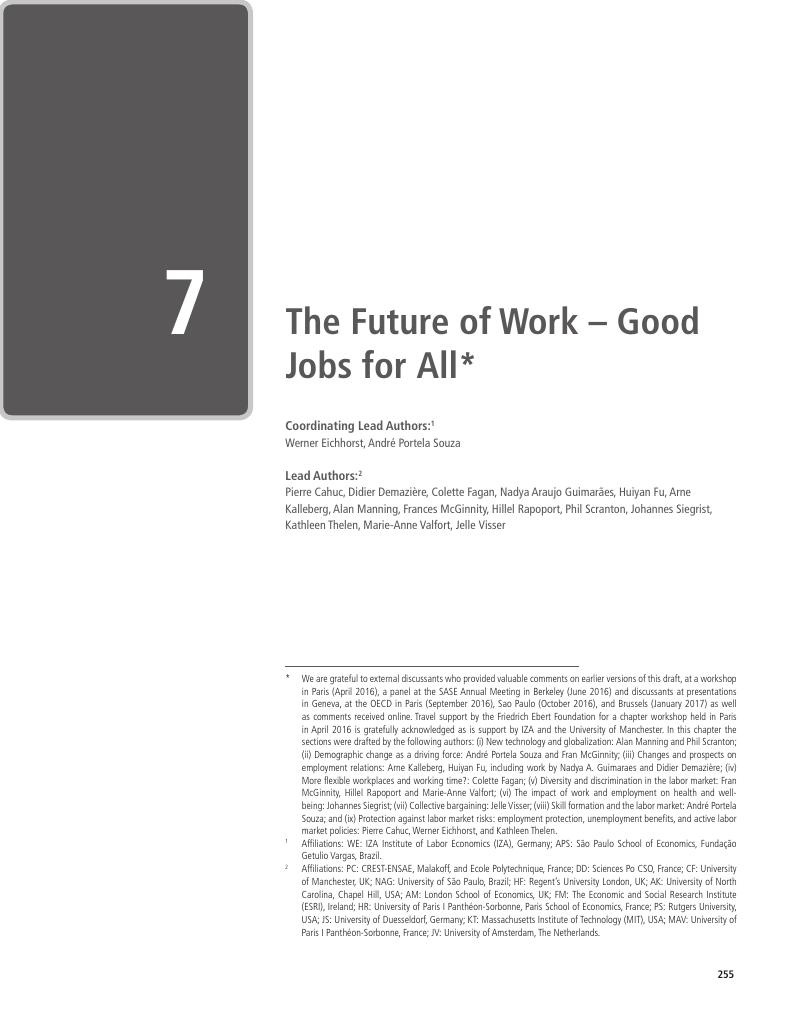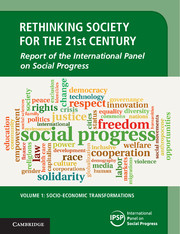Book contents
- Rethinking Society for the 21st Century
- Rethinking Society for the 21st Century
- Copyright page
- Dedication
- Contents
- Introduction to Volume 1
- Introductory Chapters
- Socio-Economic Transformations
- 3 Economic Inequality and Social Progress*
- 4 Economic Growth, Human Development, and Welfare
- 5 Cities and Social Progress
- 6 Markets, Finance, and Corporations: Does Capitalism have a Future?
- 7 The Future of Work – Good Jobs for All*
- 8 Social Justice, Well-Being, and Economic Organization*
- Authors
- Index
- References
7 - The Future of Work – Good Jobs for All*
from Socio-Economic Transformations
Published online by Cambridge University Press: 05 July 2018
- Rethinking Society for the 21st Century
- Rethinking Society for the 21st Century
- Copyright page
- Dedication
- Contents
- Introduction to Volume 1
- Introductory Chapters
- Socio-Economic Transformations
- 3 Economic Inequality and Social Progress*
- 4 Economic Growth, Human Development, and Welfare
- 5 Cities and Social Progress
- 6 Markets, Finance, and Corporations: Does Capitalism have a Future?
- 7 The Future of Work – Good Jobs for All*
- 8 Social Justice, Well-Being, and Economic Organization*
- Authors
- Index
- References
Summary

- Type
- Chapter
- Information
- Rethinking Society for the 21st CenturyReport of the International Panel on Social Progress, pp. 255 - 312Publisher: Cambridge University PressPrint publication year: 2018
References
- 2
- Cited by



